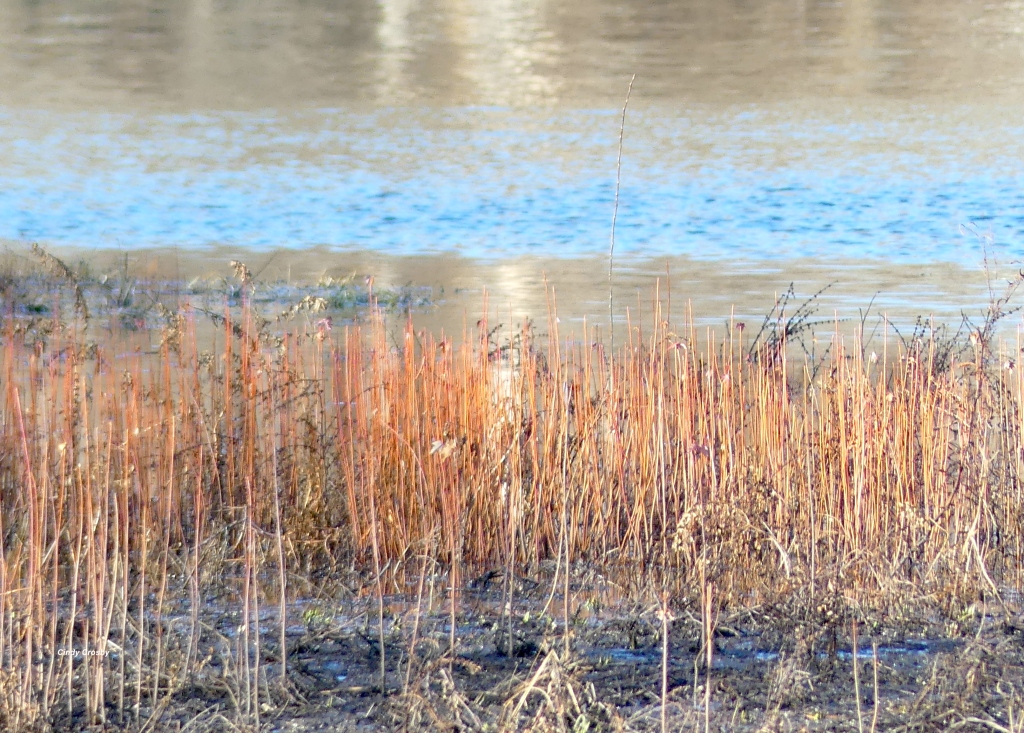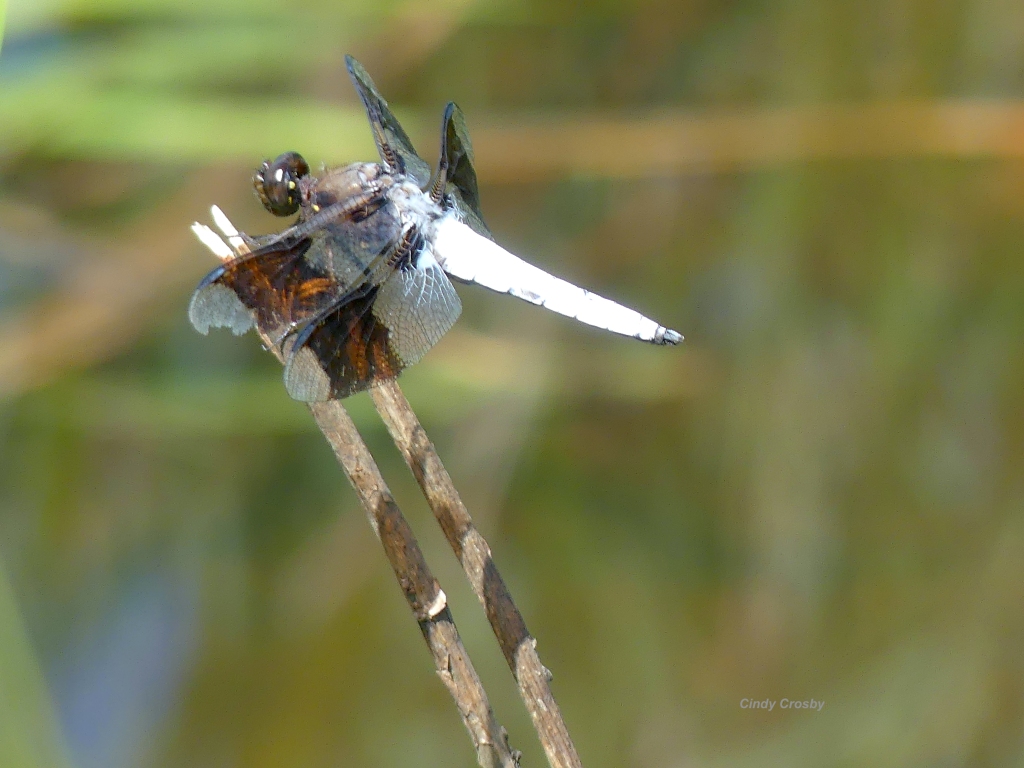“…The oldest task in human history: to live on a piece of land without spoiling it.” — Aldo Leopold
*****
December. I glanced out of the kitchen window while brewing a cup of coffee early Monday morning. Lots of activity at the bird feeders. House sparrows. A downy woodpecker. Several goldfinches. And…could it be?

Yes! At long last. A lone pine siskin. Those of you who read these posts every week know I’ve been longing to see them, but have struck out at every opportunity. Until this week, they’ve eluded me. Evidently, good things come to those who wait. Or at least, pine siskins do.
As I drank my coffee, feeling happy about the pine siskin, I found myself thinking about the backyard and how it has changed over the years. The birds are a big change. They come for the bird feeders, of course—so many birdfeeders—but also for the native plants, shrubs, and trees. The shelter they offer, and their seeds, fruits, and (in the warmer months) flowers, are all a part of the attraction.

When we purchased this suburban house 25 years ago, it was mostly lawn, some overgrown arborvitaes, and the infamous Japanese barberry and burning bush with a few other shrubs.

At that time, we had no idea how much it would change over the 25 years we’ve lived here.

And today, I’m thinking about how far we still have to go. Always a new project. Always some failures of shrubs, trees, and plants that didn’t work out. Assessing, re-assessing, plotting and planning for 2024.

What does it mean to care for a piece of land? As the risk of sounding cliché, I think it’s a journey, rather than a destination. Every year the front and backyards surprise me with their flourishings and failures. The prairie plantings, vegetable gardens, native shrubs, traditional garden flowers, and a small pond Even in the winter, I’m aware of incremental changes that have changed our small piece of land.

As a prairie steward, I help care for a 100-acre planted prairie, weeding, planting and collecting seeds. I chase dragonflies across this prairie and another 4,000-acre tallgrass preserve, Nachusa Grasslands, as a steward of these enchanting insects.

Each of these pieces of land has been spoiled in some way. Each, however, bears the story of people trying to make it the best piece of land it can be through hard work and restoration.

In the opening quote of this week’s post, Aldo Leopold tells us that “to live on a piece of land without spoiling it” is the oldest task in history. After residing in the Chicago region for a quarter of a century—the longest I have ever lived in one place—I no longer see some of the ugliness when I drive the interstates and highways. My mind skips over the power plants that give us light and heat, or the cell towers that bring me the sound of my grandchildren’s voices from thousands of miles away. I avert my eyes from the landfills full of my “unnecessary plastic items” (to quote Nanci Griffith in “Love at the Five and Dime.”). I’m a part of this land spoiling by the ways I consume.
Sure, I virtuously rinse out my cans and recycle them and the cardboard boxes from my online orders. I pile the potato peelings and other vegetative detritus from our home cooking into our two compost bins. We supplement our fast food and fancy coffee with vegetables and fruits grown in the raised beds in our backyard. We plant milkweed, and the monarchs come. I feel a sense of accomplishment! For a moment.

But is it enough? I look around, at the end of 2023, and realize how much more there is that I could be doing. How can I complain about the fields full of bland, character-less warehouses that have sprung up all around Chicago’s western suburbs and then, place my online orders so I save time? If I want to have small, independent stores in my neighborhood, I may need to make life less convenient for myself. If I snarl and complain about the terrible traffic, perhaps I need to find ways to drive a little less often, or at least, consolidate some of my errands. During the holidays, my consumption habits are all too obvious.
When it all feels overwhelming, I take comfort that I am making incremental progress. A little less meat in our meals. A gift bag that can be reused, instead of wrapping paper. One plant at a time, displacing my lawn.

Every choice has an impact on my small yard, and by extension, my community. When I sit on my back porch, the birds and butterflies and dragonflies keep me company. When I go for a hike on the tallgrass prairie of Illinois, or walk alongside a historic river, I notice how my head clears. I feel better, physically and mentally. I am reminded why these places matter.

The serendipities of a flotilla of Canada geese (yes, even geese!)…

…or an oriole’s nest, now abandoned for the winter…

…or the beauty of a sycamore tree’s seeds. I love how this seed ball–sometimes nicknamed a “button ball”, hangs over the Fox River, an easy way for this lightweight vessel to ensure seed dispersal by dropping and floating to a new location.

The sycamore tree’s bark alone is so beautiful.

These are simple pleasures that can all-too-easily go away if we stop paying attention to them. If we don’t care for them.
When I spend an afternoon pulling weeds out of my prairie plantings at home, I admit I sometimes wonder if it wouldn’t be easier to just plunk down a few bags of ornamental rocks, throw mulch alongside the house, and call it a yard. Then, I notice the diversity of the prairie seeds, the green leaves of golden alexanders, so alive even in the winter; the various curls and patterns in the rough blazing star.

I remember the butterflies that stopped to nectar in the garden through the spring, summer, and fall.

I spread homemade raspberry jam on my toast to eat with my coffee, and I’m grateful for the small backyard raised garden bed that gave us the fruit.

So much better than a lawn. I listen to the last waves of sandhill cranes moving over the house, headed south, and know that this is a sound I want to hear, year after after, until I’m no longer around to hear them.

I want to at least try, with my choices about how I live on the land, to give them, and all other creatures, a chance to live as they have lived for millions of years.
Conservationist Aldo Leopold wasn’t born knowing how to live on the land and not spoil it. His thinking developed over his life, as he worked, loved the land and its creatures, and learned more about the place he called home. I think all of us, in a time of disruptions, war, violence, and unrest, are looking at how we live — our apartments, condos, houses and communities—and trying to figure out how we can make our small piece of the earth a better place for the children who will follow us. When the big changes seem overwhelmingly out of reach, perhaps we have to make the small changes within our power.

Whenever I feel discouraged about the long way I have to go in making these changes, a walk outside—even around the neighborhood block—reminds me of why caring for these places matters.

It’s a lot to think about to end the year. A lot to plan for 2024.

Sometimes it feels like I’m not making a difference. I try to let go of that thinking. To not give up, just because the problems are so crushing. Even when I don’t see much progress, I remind myself that the work we do changes us. I know my little pieces of land, both my home and where I volunteer—and the creatures that have come to inhabit it with me—have left imprints all over my soul.

You probably have a story about how you’ve been changed too, don’t you? It’s enough that we are changed. Enough to keep us plugging away, even when the results don’t always seem evident. Doing what we can in our little corners of the world.
Keep trying.
*******
Aldo Leopold (1887-1948) was a professor at University of Wisconsin, the author of A Sand County Almanac (more than two million copies sold), and an ecologist who shaped conservation ethics and care for our natural areas. Read more about him here.
******
Join Cindy for her last program of the year!
12/12– 7:15-8:30 p.m.: “Winter Prairie Wonders” hosted by the Buffalo Grove Garden Club. Free and open to the public! For more information, click here.
Coming in January 2024
1/10/24 –“Literary Gardens: Online” 1-2:30 p.m. with the Oak Park/River Forest Garden Club. (Closed Event for Members). For information on the organization, or to inquire about becoming a member, visit here.
1/11/24–“A Brief History of Trees in America” In Person 9:30-11 a.m. with the Hilltop Gardeners Garden Club, Oswego Public Library, Oswego. Free and Open to the Public! For more information, visit their Facebook page here.
1/17/24–“Winter Prairie Wonders: Online” 7-8:30 p.m. with the Bensenville Public Library. Free and Open to the Public! Registration link coming after the new year.
1/22/24–“Literary Gardens: Online” 7-8:30 p.m. with the Arlington Heights Public Library. Free and Open to the Public! Registration link coming after the new year.
More classes and programs are at www.cindycrosby.com.
































